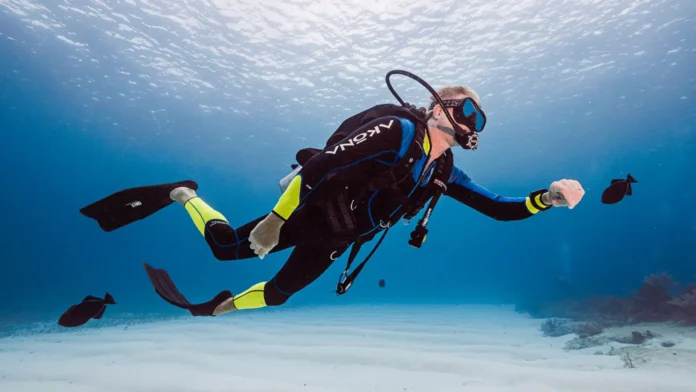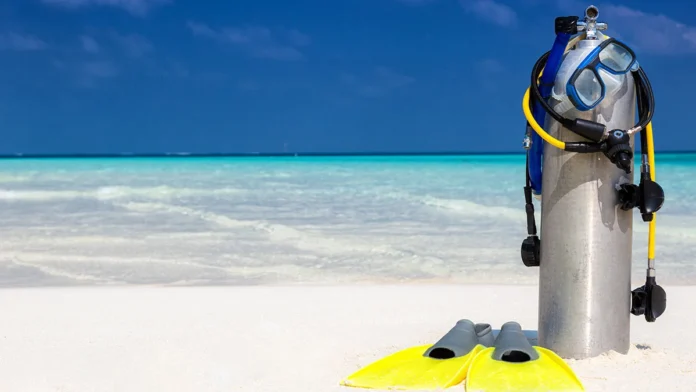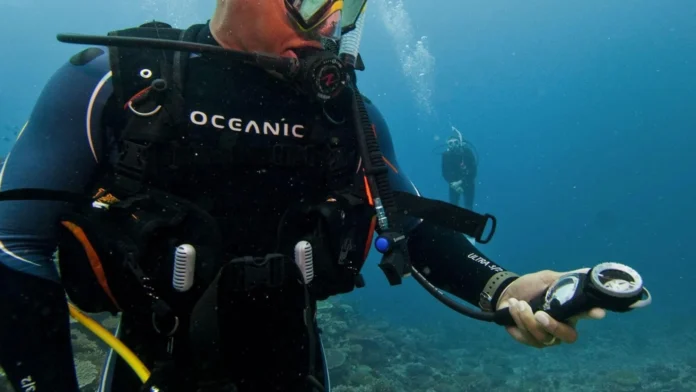Every diver eventually reaches the stage where renting gear no longer feels like enough. A mask and fins usually come first, followed by a wetsuit. But one of the biggest and most important steps is investing in your own dive computer. Choosing a dive computer is not just about buying another piece of kit. It is about safety, confidence, and freedom underwater. A dive computer becomes your constant companion during every dive, tracking your depth, time, and no-decompression limits in real time. It adapts to your actual dive profile rather than sticking to the rigid rules of a printed table. This flexibility gives you peace of mind, allows longer and more relaxed dives, and often helps you to explore more of the reef or wreck safely.
Why a dive computer matters
Dive tables are useful for learning the theory of diving, but they are limited in practice. They assume a square profile, which rarely reflects how people actually dive. Once you descend, your depth changes constantly, and your bottom time shifts along with it. A dive computer continuously monitors all of this and calculates your remaining no-decompression limit based on real conditions, not assumptions. It also tracks your ascent rate, warns you if you go too fast, and monitors your surface interval so you know exactly when you are ready to dive again. These features make diving safer and less stressful, especially when conditions change. For many divers, the moment they try a computer is the moment they wonder how they ever managed without one.
Features to look for when choosing a dive computer
The right computer for you depends on both the type of diving you are doing now and the direction you plan to go in the future. One of the first considerations is display style. Some divers prefer sleek watch-style computers that can double as an everyday wristwatch. Others go for larger wrist-mounted or console models with bold, high-contrast displays that are easy to read even in low light or murky conditions. If you plan on night dives or photography, a screen you can read clearly without effort makes a big difference.
Another key factor is Nitrox compatibility. Most modern dive computers now support enriched air nitrox, and even if you have not yet taken the course, it is worth making sure your chosen model is future-proof. Once you progress, you will already be equipped for longer and safer dives. The algorithm and conservatism settings also matter. Different brands use different mathematical models to calculate no-decompression limits. A good dive computer should allow you to adjust the level of conservatism to suit your fitness, experience, and risk comfort level. Some divers prefer a more generous setting for recreational fun dives, while others keep their settings conservative for added safety.
Connectivity is increasingly popular in modern dive computers. Some models sync directly to your smartphone, letting you download your logbook, update firmware, or even share your dive on social media. Others pair with a wireless transmitter that sends live tank pressure data to your wrist, letting you see depth, no-deco time, and remaining gas all in one glance. While not essential, these features can make your diving more convenient. Battery type is also important. Rechargeable models are environmentally friendly and perfect for divers who travel often. However, user-replaceable batteries can be more practical in remote areas where charging may not be possible. Durability, build quality, and button responsiveness are all important, especially if you dive in colder water, wear gloves, or plan on using your computer for years to come.
Recommended dive computers at different levels
Entry-level options
For new divers looking for something reliable, simple, and affordable, the Mares Puck Lite is a fantastic place to start. It is easy to use, has a clear display, and supports Nitrox. It is a no-nonsense computer that gives you all the information you need without overwhelming you with extras. Many divers happily use their Puck Lite for years before upgrading, and it remains one of the best value-for-money models on the market.
Mid-range favourites
If you are ready to take the next step, the Shearwater Peregrine is an excellent choice. It offers a bright colour screen, intuitive menus, and robust build quality. Many divers love it for its mix of user-friendliness and high-end performance. For those who want extra features, the Shearwater Peregrine TX and Shearwater Tern TX include a digital compass and wireless air integration, giving you a live reading of your tank pressure alongside depth and no-deco time. These models are particularly well suited to divers who want a long-term computer that can grow with them as their skills and ambitions expand.
Advanced and technical diving
For divers moving into more advanced training, deeper dives, or technical setups, the Shearwater Teric and Shearwater Perdix are two of the most respected computers on the market. They support multiple gases, trimix, and advanced decompression planning, while also offering superb reliability and customisation. Many technical divers swear by these models, and their reputation for toughness is well deserved. If you are serious about going beyond recreational limits, one of these will likely be your companion for years.
Smartwatch alternatives
Not every diver wants a dedicated dive computer. If you are already using an Apple Watch Ultra 1 or 2 , you can add the Oceanic+ app, turning your smartwatch into a capable dive computer. This solution is best for recreational divers who want the convenience of an all-in-one device. It may not have the ruggedness or depth capabilities of a dedicated Shearwater, but for casual divers who also use their watch for fitness tracking and daily wear, it is an appealing option.
Honorable mentions
There are many excellent dive computers beyond the models mentioned above. The Mares Sirius blends a sleek watch design with advanced functions up to technical level, appealing to divers who want style without losing features. Other top manufacturers such as Suunto, Garmin, Ratio, and Halcyon also produce outstanding computers and smartwatch computers at all levels. The best choice depends on what feels comfortable for you, how much information you want displayed, and how far you see your diving going in the future.
Balancing budget and long-term investment
Dive computers range from under $300 to well over $1,500. The challenge is choosing a model that fits your budget now but will not hold you back later. Buying too basic can mean replacing your computer within a year or two, while going too advanced too early can leave you struggling with features you do not yet need. Another consideration especially with smartwatches is longevity as manufacturers want you to upgrade. The goal is to find the balance where the computer matches your current diving but still gives you room to grow. At Ocean Tribe, we often advise divers to choose the best computer they can reasonably afford, but always with their actual diving plans in mind.
Our final advice
At Ocean Tribe, we encourage divers to try before they buy. Rent or borrow a computer, talk to instructors, and see which models feel right for you. A dive computer should feel natural on your wrist or in your console, and the menus should make sense at a glance. Choosing a dive computer is personal. It is not about what looks best in a catalogue but about what feels like a trusted partner underwater. Take the time to explore your options, and you will find a computer that supports you for many years of safe, confident, and enjoyable diving.
FAQs
Do I really need a dive computer as a beginner?
Yes. A dive computer adds safety, tracks your profile in real time, and helps you learn good habits from your very first dives.
Can I rent a dive computer instead of buying one?
You can, but owning one gives you consistency and familiarity. Using the same computer every dive helps you build trust in your gear. Rental computers tend to be the very basic robust models built for heavy use and not too many features.
Is a wristwatch-style or a console dive computer better?
It depends on your preference. Watch-style computers are compact and travel friendly. Consoles are bigger and easier to read in low visibility.
How long will a dive computer last?
With proper care, a dive computer can easily last five to ten years. Rechargeable batteries and regular servicing extend its lifespan.
Does a colour screen matter?
A colour screen does not change the core function of the computer, but it does make information easier to read at a glance. Bright displays improve visibility in low light and help highlight warnings clearly. Many divers find them more intuitive, although they usually come with higher price tags and shorter battery life compared to simple monochrome mode.
Do I need Bluetooth connectivity?
Bluetooth connectivity is not essential, but it can be very convenient. It allows you to sync dives to your phone, update firmware, and even share logs with friends or instructors instantly. If you enjoy digital logging or want an easy way to track your diving progress, Bluetooth is worth having. If you prefer to keep things simple, you can manage perfectly well without it.
Do we stock any of these dive computers at Ocean Tribe?
Yes. At Ocean Tribe we stock popular Shearwater models such as the Peregrine, Peregrine TX, Tern TX, Teric, and Perdix, along with Mares computers like the Puck Lite and Sirius. If you would like to try one before buying, ask our team.e can often arrange a demo or recommend the best option for your diving level.
























